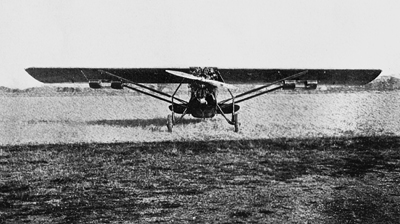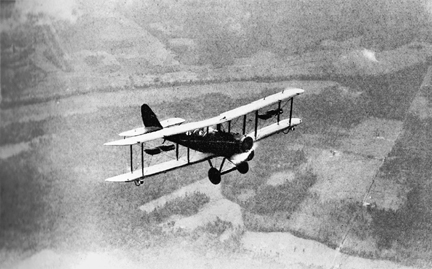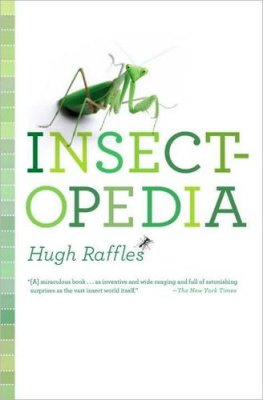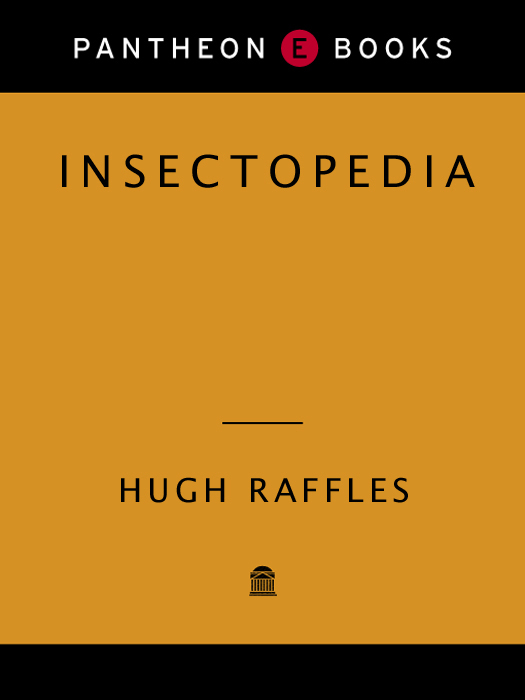Also by Hugh Raffles
In Amazonia: A Natural History
For my mother and father,
for my sisters,
for the insects, for their friends,
and, of course,
For Sharon
The minuscule, a narrow gate, opens up an entire world.
GASTON BACHELARD
CONTENTS
On January 8, 2008, Abdou Mahamane
Was Driving through Niamey
I n the Beginning
In the beginning, a long, long time ago, a time before any people were here, a time close to the primordial gas and ooze, a time not too long after the time (we are, after all, talking geological time) when those heroic protozoa created the planets first encyclopedia by turning themselves into mitochondria and chloroplasts within other cells, which in turn formed alliances that grew into yet other beings, which joined up with yet others to make invisible cities, worlds within worlds Sometime after that time but still long before our time, there were the insects.
For as long as weve been here, theyve been here too. Wherever weve traveled, theyve been there too. And still, we dont know them very well, not even the ones were closest to, the ones that eat our food and share our beds. Who are they, these beings so different from us and from each other? What do they do? What worlds do they make? What do we make of them? How do we live with them? How could we live with them differently?
Imagine an insect. What comes to mind? A housefly? A dragonfly? A bumblebee? A parasitic wasp? A gnat? A mosquito? A bombardier beetle? A rhinoceros beetle? A morpho butterfly? A deaths-head moth? A praying mantis? A stick insect? A caterpillar? Such varied beings, so different from each other and from us. So prosaic and so exotic, so tiny and so huge, so social and so solitary, so expressive and so inscrutable, so generative and so opaque, so seductive yet so unsettling. Pollinators, pests, disease vectors, decomposers, laboratory animals, prime objects of scientific attention, experimentation, and intervention. The stuff of dreams and nightmares. The stuff of economy and culture. Not just deeply present in the world but deeply there, creating it, too.
There are too many insects, uncountable numbers, more all the time. And they are so busy, so indifferent, and so powerful. Theyll almost never do what we tell them to do. Theyll rarely be what we want them to be. They wont keep still. In every respect, they are really very complicated creatures.
A ir
1.
On August 10, 1926, a Stinson Detroiter SM-1 six-seater monoplane took off from the rudimentary airstrip at Tallulah, Louisiana. The Detroiter was the first airplane built with an electric starter motor, wheel brakes, and a heated cabin, but it was not a good climber, so the pilot leveled off quickly, circled the airstrip and surrounding landscape, held open the specially fitted sticky trap beneath the planes wing for the designated ten minutes, and soon returned to land. As he touched down, P. A. Glick and his colleagues at the Division of Cotton Insect Investigations of the U.S. Bureau of Entomology and Plant Quarantine ran out to meet him.
It was a historic flight: the first attempt to collect insects by airplane. Glick and his associates, as well as researchers at the Department of Agriculture and at regional organizations such as the New York State Museum, were trying to discover the migration secrets of gypsy moths, cotton bollworm moths, and other insects that were munching their way through the nations natural resources. They wanted to predict infestations, to know what might happen next. How could they contain these insect enemies if they didnt know where, when, and how they traveled?

2.
Before Tallulah, high-altitude entomology had barely got off the ground. Researchers sent up balloons and kites fitted with hanging nets, climbed up pylons, and pestered lighthouse keepers and mountaineers. But armed now with the new airplane technology, Glick went down to Tlahualilo in Durango, Mexico. There, 3,000 feet above the valley plain, his pilots trapped the pink bollworm moth, a feared invader of the U.S. cotton crop. Face-to-face with the unanticipated scale of his task, Glick wrote tersely that the pink bollworm moths are carried in the upper air currents for considerable distances.
There were only a few flies and wasps in that first trap at Tallulah. But over the next five years, the researchers flew more than 1,300 sorties from the Louisiana airstrip and captured tens of thousands more insects at altitudes ranging from 20 to 15,000 feet. They generated a long series of charts and tables, cataloguing individual insects of 700 named species according to the height at which they were collected, time of day, wind speed and direction, temperature, barometric pressure, humidity, dew point, and many other physical variables. They already knew something about long-distance dispersal. They had heard about the butterflies, gnats, water striders, leaf bugs, booklice, and katydids sighted hundreds of miles out on the open ocean; about the aphids that Captain William Parry had encountered on ice floes during his polar expedition of 1828; and about those other aphids that, in 1925, made the 800-mile journey across the frigid, windswept Barents Sea between the Kola Peninsula, in Russia, and Spitsbergen, off Norway, in just twenty-four hours. Still, they were taken aback by the enormous quantities of animals they were discovering in the air above Louisiana and unashamedly All of a sudden, it seemed, the heavens had opened.
Unmoored, they turned to the ocean, began talking about the aeroplankton drifting in the vastness of the open skies. They told each other about tiny insects, some of them wingless, all with large surface-area-to-weight ratios, plucked from their earthly tethers by a sharp gust of wind, picked up on air currents and thrust high into the convection streams without volition or capacity for resistance, some terrible accident, carried great distances across oceans and continents, then dropped with the same fateful arbitrariness in a downdraft on some distant mountaintop or valley plain. They estimated that at any given time on any given day throughout the year, the air column rising from 50 to 14,000 feet above one square mile of Louisiana countryside contained an average of 25 million insects and perhaps as many as 36 million.

3.
From the mid-1920s through the 1930s, high-altitude researchers in France, England, and the United States were making the same discoveries and coming to the same conclusions. Broadly speaking, they decided, there were two kinds of insect travel.An hour later, with the torrent now going full strength, he composed himself enough to pull out his high-power binoculars:
I began about twenty-five feet overhead and then refocussed slowly upward until the limit of vision of the small insects was reached. This, judged by horizontal tests of objects of similar size would be about a half mile zenithwards, and at every fractional turn of the screw, more and more smaller-appearing butterflies fluttered into clarity.










